Physiotherapy treatment & Exercise for Golfer’s elbow
Physiotherapy treatment and exercise for Golfer’s elbow is a great option to recover naturally and permanently. Physiotherapy treatment helps to relieve pain and also improves function.
Golfer’s elbow exercises include both stretching and strengthening. In the early stages, stretching is extra important. As it is an overuse injury, overdoing the strengthening exercises too soon could slow or prevent the recovery process. Here we describe the exercises which form part of a Golfer’s elbow rehabilitation.
What is a golfer’s elbow?
On the inside crook of your elbow joint, several muscles come together & attach. These muscles are responsible for flexing your wrist joint & fingers. A golfer’s elbow happens when these muscles are inflamed.
Golfer’s elbow, known as medial epicondylitis, causes pain, inflammation, & tenderness in the muscles on the inside of the elbow joint & the forearm.
It’s the result of overuse or general wear & tear of the tendons, bones, & muscles in this area, which are used for grasping & wrist flexion.
Activities that require repetitive gripping movements, such as throwing, rock climbing, racket sports, or weight training, can often lead to a golfer’s elbow.
Those muscles are always in use, & that is their anchor point. When flexing & contracting, they tug & pull at that anchor point to do their job. The issue comes when those muscles are worked over their limit,
Most people with golfer’s elbow feel elbow joint tenderness, even from a light touch. You might also have pain when you bend or flex your wrist.
We have compiled the best exercises to assist you to heal from this injury. These exercises will accelerate blood flow, relieve pain, & decreases inflammation in your elbow joint & forearm muscles. They will also assist stretch & strengthen these tendons.
Keep reading to learn how & when to do these exercises, as well as suggestions for preventing & treating a golfer’s elbow.
what to do after an injury?
Initial treatment of golfers’ elbow
Medication
You can take an over-the-counter pain reliever. Try ibuprofen Advil, Motrin IB, other, naproxen sodium Aleve or acetaminophen Tylenol, others.
Corticosteroid injections are not commonly given because they have not been shown to be effective long-term. A treatment being tried is platelet-rich plasma. This includes drawing a small amount of your blood & injecting a concentrated amount of platelets & other anti-inflammatory factors into the tender area. More studies are helping to evaluate the effectiveness of this treatment.
Therapy
Try the following:
Rest
Put your golf game or other repetitive tasks on hold until the pain is gone. If you return to task too soon, you can worsen your condition. Rest for a few days when your symptoms are chronic. Take a break from any motions that cause pain. If you must do them for a job, modify or adjust the movements as much as you are able. To prevent swelling, lift your elbow joint above your heart.
Heat and ice treatment
Use a heating pad or ice pack on the injured area. Wrap it in a towel to keep away from making direct contact with your skin. Do this for ten to fifteen minutes at a time every few hours.
Ice the affected area. Apply ice packs to your elbow joint for 15 to 20 minutes at a time, 3 to 4 times a day for several days. To protect your skin, cover the ice packs in a thin towel. In addition to homemade heat & cold treatments, you can find heating pads & ice packs online & at your local pharmacy.
Use a brace
Your doctor might suggest that you wear a counterforce brace on your injured arm, which might decrease tendon & muscle strain.
Book a session
Give yourself a little TLC. If you can, schedule a session for acupuncture, massage, or Rolfing. Continue with the sessions even if your symptoms are better.
Ergonomics
If you have pain due to how you sit at your desk or from elevating or carrying heavy objects or bags, change your positioning & posture to allow for proper motion.
Natural options for pain relief include turmeric, willow bark, & cloves.
Stretch and strengthen the affected area. Your doctor might recommend exercises for stretching & strengthening. Gradually loading the tendon with specific strength training exercises has been shown to be especially successful. Other physical or occupational therapy practices can be assisted too.
Recovery stretches
Various exercises can assist treat a golfer’s elbow. Soft tissue rolling is a technique that assists with blood flow & generally relaxes your muscles. Flex your wrist joints until you experience a slight tension in your forearm.
Why Does Golfer’s Elbow Hurt in the Morning?
Golfer’s elbow, similar to tennis elbow & other injuries, tends to feel stiffer or tighten in the morning. When you are sleeping & not moving around as you do during the day muscles & tendons stiffen & blood flow reduces. Nighttime pain may also be caused by your sleeping posture, & especially if you sleep on the injured arm.
The Best Sleeping Position
The Symptoms of medial epicondylitis respond best to sleeping positions that allow the arm to remain straight & for optimum blood flow to the tendons which helps the natural recovery process. Try sleeping on your back with your injured arm straight along your side. Use positioning pillows or folded blankets to help keep your body & arm in position. Avoid applying pressure to the injured arm. This will help decreases inflammation & swelling in the elbow joint.
Effective Golfer’s Elbow Treatment
Positions to Avoid When Sleeping
Avoid sleeping on top of the injured arm & positioning your arm overhead. Sleeping on your injured arm will restrict blood flow & stretching your arms overhead can aggravate the sports injury. If you have a hard time recalling to keep your arm by your side try wearing a splint or brace that keeps your arm straight & serves as a gentle reminder of your relaxed position.
How can Massage Therapy Help With Golfer’s Elbow?
golfer’s elbow is also painful & can again especially when you overuse your forearm muscles. Among the recommended action to take is to relax your elbow joint which can mend naturally within six months to two years. It is also essential to keep away from getting affected or else recovery will take longer.
As we can notice taking just relaxing alone can be longer. Cross-friction massage can help you to recover from a golfer’s elbow much faster than just relaxing. Applying it to the tendon can help to stimulate the recovery process. Massaging the forearm muscles can also accelerate their function. It also reduced the tension on your inflamed tendons. The scar tissue forming around the tendons can also crackdown. The massage will also be applied to your upper arm & forearm maximizing blood circulation.
Massage therapy can simply help in cracking down the tension in the tendons, thus it can help in decreasing the pain. Also, it is recommended to put in cold therapy after massage therapy.
Treatment for overused muscles & tendons simply calls for massage therapists. They are trained to address a golfer’s elbow. They are knowledgeable in assessing & providing the right care for your condition.
Aside from cross-friction massage, therapists can use other types of techniques such as deep tissue massage, active release technique, myofascial release, neuromuscular therapy, or acupressure
Golfer’s Elbow Massage Therapy Treatment:
Acute Golfers Elbow Massage Therapy Treatment:
- injured arm elevated if really inflamed, cold hydro applied to the medial area of the forearm
- MLD ( manual lymphatic drainage) to the injured arm
- Treat proximal arm for hypertonicity
- Ischemic compressions to trigger point mentioning to the lesion site
- Treat hypertonicity in antagonists of injured muscles, do not flush toward the medial area of the forearm near the elbow-lesion site use segmental instead of long strokes
- Treat hypertonicity of wrist flexor muscles using GTO on the uninjured distal tendons of the wrist flexors
- Muscle squeezing & stroking to the distal limb
- Pain-free Passive Relaxed ROM on proximal and affected joint to maintain successive action
- Gentle joint play to the affected arm
Chronic Golfers Elbow Massage Therapy Treatment:
- Position for comfort
- Hydro is local deep moist heat to soften adhesion & accelerate circulation
- If chronic edema is constant, begin with fascial work to loosen the area, & follow by contrast hydro to flush it out
- The proximal arm was treated to accelerate circulation & reduce hypertonicity & trigger points
- Wrist extensor muscles treated with skin rolling, long effleurage, and petrissage to increase circulation
- Wrist flexors were treated, working toward the lesion to increase circulation
- Adhesions may form between tendons and para tendons or at musculocutaneous junctions of the wrist flexor muscles.
- Skin rolling, fascial spreading, and muscle stripping are used on wrist flexor muscles to decrease adhesions before cross fiber friction technique is used
- Follow frictions with passive stretch and ice
- A distal limb may be treated with effleurage and petrissage
- Joint play & Passive range of motion to injured arm
- Passive stretch to wrist flexor muscles
Exercise for golfers’ elbow
Exercise tips for golfer’s elbow
- To build strength, prevent & relieve pain, & increase flexibility, do the following exercises 2 times per day.
- Build up gently and gradually over time. Do these exercises before & after any task that causes stress or strain. Be gentle & do not force any of the motions.
- You may experience sensations, aches, & slight discomfort while doing these exercises, but it should not go beyond that.
- If you experience pain or any of your symptoms are chronic, stop doing the exercises. Give yourself time to rest completely, & if you do not see an improvement in a few days, talk to your doctor.
Stretching exercise
Golfer’s elbow stretch
- You will experience this stretch in the underside of your forearm.
- Extend your injured arm in front of you with your fingers & palm facing up.
- Use your other hand to gently pull your fingers & wrist joint down onward your body.
- Hold this stretch for 30 seconds.
- Do 2–5 reps.
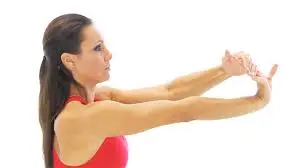
Wrist Extension Stretch
- Equipment needed: None
- Additional instructions: This stretch should be done throughout the day, especially before the task.
- After recovery, this stretch should be involved as part of a warm-up to tasks that include
- gripping, such as gardening, tennis, & golf.

Step-by-step directions
- Straighten your arm & bend or flex your wrist joint back as if signaling someone to
- stop.
- Use your other hand to apply gentle pressure across the palm & pull
- it toward you until you experience a stretch on the inside of your forearm.
- Hold the stretch for 15 seconds.
- Repeat five times, & then perform this stretch on the opposite arm.
- Repetitions 5 reps, 4x a day
- Days per week 5 to 7
- Tip Do not lock your elbow.
Wrist Flexion Stretch
- Equipment needed: None
- Additional instructions: This stretch should be done throughout the day, especially before the task.
- After healing, this stretch should be involved as part of a warm-up to tasks that involve
- gripping, such as gardening, tennis, and golf.
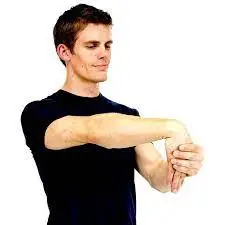
Step-by-step directions
- Straighten your arm with your palm facing down & bend or flex your wrist joint so
- that your fingers point down.
- Gently pull your hand toward your body until you experience a stretch on the
- outside of your forearm.
- Hold the stretch for 15 seconds.
- Repeat five times, & then perform this stretch on the opposite arm.
- Tip Do not lock your elbow.
Isometric exercise
Isometric wrist strengthening (extension)
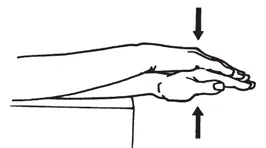
- Keep your body still throughout this exercise.
- While seated, & place your affected forearm on a table with your palm facing lower.
- Place your other hand on the back of your injured hand.
- Press your injured hand up, using your other hand to create resistance by pressing down.
- Continue for ten seconds, slowly accelerating the resistance.
- Gently release. Do 15 reps.
Isometric wrist strengthening (flexion)
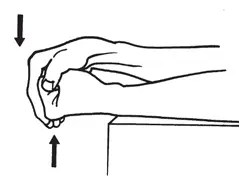
- Keep your body still while doing this type of exercise.
- While seated, & rest your injured forearm on a table with your palm facing up.
- Press your other palm into your injured hand.
- Press your injured hand upwards as you use your other hand to create resistance by pressing down.
- Continue for ten seconds, slowly accelerating the resistance.
- Gently release. Do 15 reps.
Range of motion exercise
Wrist Extension
- Equipment needed: Dumbbell hand weights (500 gms, 1 kg, 1.5 kg.)
- Additional instructions: This exercise should be performed in phages. Begin each stage with no
- weight. When you are able to complete 30 repetitions on two consecutive days with no acceleration
- pain, move forward in the program by accelerating weight (begin with ., 500gms, advance to 1 kg., & end
- with 1.5 kgs.).
- phase 1: Bend your elbow to 90 degrees & support your forearm
- on a table with your wrist joint placed at the edge.
- phase 2: Straighten your elbow slightly. Continue to support your
- arm on the table.
- phase 3: Fully straighten your elbow joint & elevate your arm so that it is
- no longer supported by the table.
Step-by-step directions to be followed for each phase
- With your palm down, bend your wrist up as far as possible.
- Hold up for one count, & then slowly lower three counts.
- Begin without using weight & accelerate the repetitions until you
- can complete 30.
- When you can perform thirty repetitions on two consecutive days
- without accelerating pain, begin performing the exercise using 0.5 lbs.
- weight.
- Follow the same steps above to continue to accelerate repetitions
- & weight until you are using 1.5 kgs. weight & can perform
- 30 repetitions on two consecutive days without accelerating pain.
- Repetitions:30 reps,1x a day
- Days per week:5 to 7
- Tip Do not let the weight pull your hand lower too quickly.
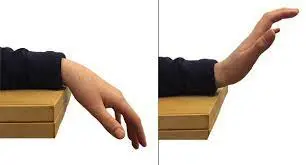
Wrist Flexion
- Equipment needed: Dumbbell hand weights (500gms, 1 kg, 1.5 kgs.)
- Additional instructions: This exercise should be performed in phases & comfortable positions. Begin each stage with no
- weight. When you are able to complete 30 repetitions on two consecutive days with no accelerating
- pain, move forward in the program by accelerating weight (begin with 500gms., advance to 1 kg., end
- with 1.5 kgs.).
- phase 1: Bend or flex your elbow joint to 90 degrees & support your forearm
- on a table with your wrist joint placed at the edge.
- phase 2: Straighten your elbow slightly. Continue to support your
- arm on the table.
- phase 3: Fully straighten your elbow joint & elevate your arm so that it is
- no longer supported by the table.
Step-by-step directions to be followed for each phase
- With your palm up, bend your wrist up as far as possible.
- Hold up for one count, & then slowly lower three counts.
- Begin without using weight & accelerate repetitions until you
- can complete 30.
- When you can perform thirty repetitions on two consecutive days
- without accelerating pain, begin performing the exercise using 0.5lbs.
- weight.
- Follow the same steps above to continue to accelerate repetitions
- & weight until you are using 1.5 kgs. weight & can perform
- 30 repetitions on two consecutive days without accelerating pain.
- Days per week: 5 to 7
- Tip Do not let the weight pull your hand lower too quickly.
Forearm Supination & Pronation
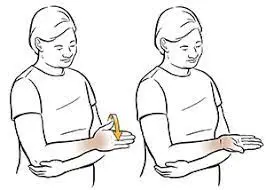
- Equipment needed: Dumbbell hand weights (500gms, 1 kg, 1.5 kgs.)
- Additional instructions: This exercise should be performed in phases & rest position. Begin each stage with no
- weight. When you are able to complete 30 repetitions on two consecutive days with no accelerating
- pain, move forward in the program by accelerating weight (begin with 500 gms., advance to 1 kg., and end
- with 1.5 kgs.).
- phase 1: Bend your elbow joint to 90 degrees & support your forearm
- on a table with your wrist joint placed at the edge.
- Phase 2: Straighten your elbow slightly. Continue to support your
- arm on the table.
- phase 3: Fully straighten your elbow joint & elevate your arm so that it is
- no longer supported by the table.
Step-by-step directions to be followed for each phase
- Begin with the palm facing the side. Slowly turn the palm facing up.
- Slowly return to the start position, & then slowly turn the palm
- down.
- Slowly return to the starting rest position. This completes 1 repetition.
- Begin without using weight & accelerate the repetitions until you
- can complete 30.
- • When you can perform thirty repetitions on two consecutive days
- without accelerating pain, begin performing the exercise using 0.5lbs.
- weight.
- Follow the same steps above to continue to accelerate repetitions
- & weight until you are using 1.5 kgs. weight & can perform
- 30 repetitions on two consecutive days without accelerating pain.
- Repetitions: 30 reps,1x a day
- Days per week: 5 to 7
- Tip When using a dumbbell, & try to let the weight pull or bring your forearm in either direction as far as possible.
Stress Ball Squeeze

- Equipment needed: Rubber stress ball
- Additional instructions: This exercise should be performed after finishing the above-staged strengthening
- exercises. Your arm & elbow joints’ relaxed position for this exercise
- should match the stage you are completing.
- Repetitions: 10 reps,1x a day
- Days per week: 5 to 7
Finger Stretch
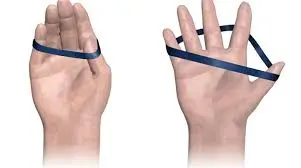
- Equipment needed: Elastic band
- Additional instructions: This exercise should
- be performed after completing the above-staged
- strengthening exercises. Your arm & elbow joint relax position for this exercise should match the stage you
- are completing.
- Repetitions: 10 reps,1x a day
- Days per week: 5 to 7
Wrist Radial Deviation
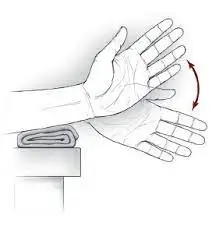
- The last essential direction that the wrist joint can move into is from side to side, known as radial & ulnar deviation. Specifically, the radial deviation is an easy move that can be done to promote good overall wrist health and strength. This action is very small & subtle.
- Set up your wrist joint one last time as above, so that it can move freely
- Again, the thumb is pointing up on the way to the ceiling
- Hold the hand in a loose fist
- Then, bring the thumb side of the wrist joint up on the way to the ceiling while keeping the forearm resting on the table or stool
- Go as high as possible without pain or motion in the elbow joint & upper arm
- Move in & out of this position slowly
- Repeat for 10-15 repetitions for 2-3 sets
- Add weight or resistance as needed
Elbow Exercises
While the muscles that bend and straighten the elbow aren’t directly affected by the golfer’s elbow, they connect to the elbow in very close proximity to the affected areas. Plus, they can get stiff & painful secondary to general inflammation in the elbow joint. Thus, some basic elbow joint exercises can be beneficial with your elbow joint rehabilitation.
Bicep Curl
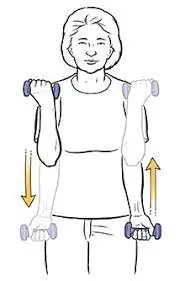
- The bicep muscles are a large muscle group that provides a lot of power & strength to the elbow joint and shoulder. Weakness in the biceps can increase forearm pain. A basic bicep curl can assist.
- Grab some small to medium dumbbells or a resistance band starting lighter is better to prevent aggravation
- For a resistance band, & stand on it with both legs & hold onto each end with one hand
- Keep good posture, tighten the abs, & keep your elbows joint tucked into your side
- Bend the elbows joint as you bring the palms up on the way to your shoulders
- Continue as far as is comfortable
- Repeat for 10-15 repetitions for 2-3 sets
- Accelerate repetitions & resistance as needed, always focusing on keeping good form
Tricep Extension in Supine

- The triceps also include innate elbow joint stability that can affect overall function. Keeping these muscles in the back of the upper arm can also be beneficial for overall elbow joint health.
- Lie on your back with small to medium weights
- Bend or flex the knees with the feet flat on the floor for stability
- Holding the weights, bring both of your arms straight out in front of you until the shoulder joint is at 90 degrees & the elbow joint is straight
- From here, keep the upper arm totally still as you let the weight fall toward the floor above your head by bending or flexing the elbow joints, focusing on keeping control throughout
- Go as far as is a comfortable position with your elbow joint flexion range of movement before returning to the starting relax position
- Repeat 10-15 times for 2-3 sets total
- Helpful Tools
- When it comes to optimal wrist joint, forearm, & elbow joint strengthening, having a few tools on hand can assist boost your results.
Conditioning program
Resistance Band Exercises
Elastic resistance band exercises are great because the bands are economical & more portable than traditional dumbbell weights. Exercises 2 or 3 both work your elbow joint & wrist muscles to keep them strong & balanced.
TheraBand Wrist Flexion
- Sit in a chair & step on the ends of your TheraBand resistance band with both feet
- Hold the middle of the loop in your right side hand with your palm up
- Brace your right side forearm on your thigh for support
- Bend your wrist upward
- Hold and slowly return
- Repeat
- Switch to your left arm
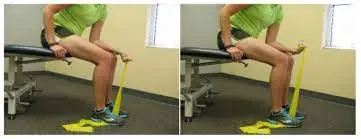
TheraBand Wrist Extension
- In the same position as the exercise, sit in a chair with the ends of the resistance band under both feet
- Hold the created loop with your right side hand, the palm facing down
- Stabilize your right side forearm on your thigh
- Slowly bend your wrist joint upward, hold, & return
- Repeat
- Switch to the other side
- TIP: Focus on bending or flexing your wrist joint & not your elbow joint during this exercise.
Theraband Wrist Extension
No Equipment Needed Exercises
The exercises do not require any special tools. You can do them with a small dumbbell you might already have or even a water bottle.
Wrist Curls
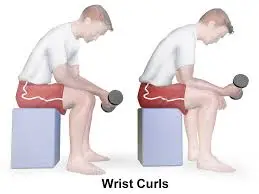
- Place your forearm on the edge of the table with your hand dropping over the edge
- Grasp a 1-2 pound weight (dumbbell, water bottle, etc.) palm up
- Slowly bend or flex your wrist joint up & down, raising & lowering the weight
- Switch arms and repeat
- TIP: Keep your forearm flat on the table. Let your wrist do the work.
Resisted Forearm Supination and Pronation
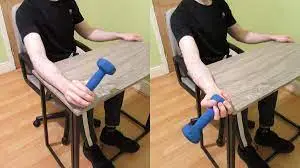
- Rest your forearm on your thigh or a tabletop, with your hand dropping off the edge
- Grasp a 1-2 pound weight in your hand with your palm up
- Slowly turn your palm lower & then back up
- Repeat
- Switch to the opposite side
- TIP: Rotate your forearm not your elbow.
Eccentric strengthening exercises
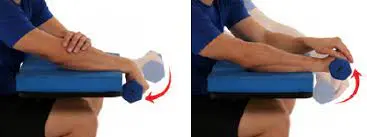
- Grasp a weight in your hand on the side of your body that is affected & sit down.
- Relax your arm on your thigh, & with your palm facing upwards. Your elbow joint should be bent & your wrist joint stretched.
- Gently lower the hand with the weight in it.
- Use your free hand to assist move the weight back to its original resting position.
- Repeat about 10 to 15 times.
- After a short break, & repeat this set of exercises 2 more times.
Resistance bands
- Resistance bands are an adaptable way to strengthen your arms. A lighter resistance is typically best for the wrist joint & forearm. Whereas, you will want medium to heavy bands for the elbows joints & shoulder joints. The most important idea with bands is understanding how to set up the angle of your band to correctly target each muscle group you want to address. A resistance band takes up little room & can even accompany you on a trip so that you do not miss a strengthening day.
Choosing the Best Resistance Bands
Grip Strengtheners
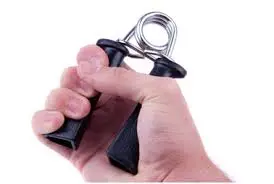
- A grip-strengthening device can also increase the outcomes of your wrist joint, forearm, & elbow joint rehab program. There are a variety of options hanging on your goals, preferences, & what muscles you want to primarily target. The most popular options include putty for its adaptability or a simple gripping ball or pillow aka a stress ball. Daily hand & wrist joint strengthening with these tools can be done anywhere & can assist you to experience your best.
Different Types of Grip Strengtheners
Hand Weights
- Light dumbbells (500gms, 1 kg) or velcro wrist joint & ankle joint weights are great tools when your forearm muscles are able to tolerate more resistance. Since the forearm muscles are small, it is important to keep the weight light. Always start with low weight for your forearm, you can always add more weight as you experience comfort.
What exercises should you avoid with a golfer’s elbow?
While rehabbing, try not to increase your injury with motions that include engaging the muscles in your forearm.
How a golfer’s elbow affects your life will depend on the severity of your symptoms & what daily tasks you normally participate in. While there are no hard rules on what to keep away from, certain moves can certainly be increased to the elbow joint. These rules generally apply to both golfer’s elbow & tennis elbow also known as lateral epicondylitis.
Golfer’s elbow exercises to avoid include:
- Heavy lifting, especially in a palm-up position.
- Repetitive pulling or lifting.
- Movements that involve your symptomatic side.
- Once you recover, prevent re-injury by maintaining:
- Shoulder mobility you should be able to move your arms overhead & to the side.
- Good posture keeps your spine & shoulder joints in good alignment
- Tight gripping, such as with weights, driving, & writing
- Elbow joint overuse & repetitive or recurring gripping, such as with rock climbing, golfing, throwing, racquet sports, or weight lifting
- Heavy upper-body lifting
- Exercise, Activity, and Movements that specifically increase strain on the elbow, such as push-ups and pull-ups
- Anything that is aggravating to the forearm & elbow joint
FAQ
What is the rapid way to cure golfers’ elbows?
Try the following:
Rest: Put your golf game or other repetitive tasks on hold until the pain is gone.
Ice: Apply to the affected area. Apply ice packs to your elbow joint for 15 to 20 minutes at a time, 3 to 4 times a day for several days.
Use a brace.
Stretch & strengthen the affected area.
Is heat good for golfers’ elbows?
Apply ice or heat therapy.
Brown explains that if the pain is occurring within the first 72 hours, ice therapy such as an ice pack could assist alleviate pain from the injured area. However, if the pain is chronic & recurring, heat therapy such as a heating pad would be the preferred method.
How do you rest your arm with a golfer’s elbow?
Try sleeping on your back with your injured arm straight along your side. Use positioning small pillows or folded blankets to assist keep your body & arm in position. Keep away from applying pressure to the injured arm. This will assist decrease inflammation & swelling in the elbow joint.
Does the golfer’s elbow ever go away?
In some cases, the golfer’s elbow solves totally with self-care & physiotherapy, & no further management is needed. Recovery can take time & patience, however. Total symptom relief often requires 3 to 6 months of consistent physiotherapy.
Can stretching cure golfers’ elbows?
In most cases, the symptoms of the golfer’s elbow go away within 1 year without any special treatment. To try to make them go away presently, people can do stretching & strengthening exercises. The aim of eccentric exercises is to strengthen the flexor part of muscles in the forearm.

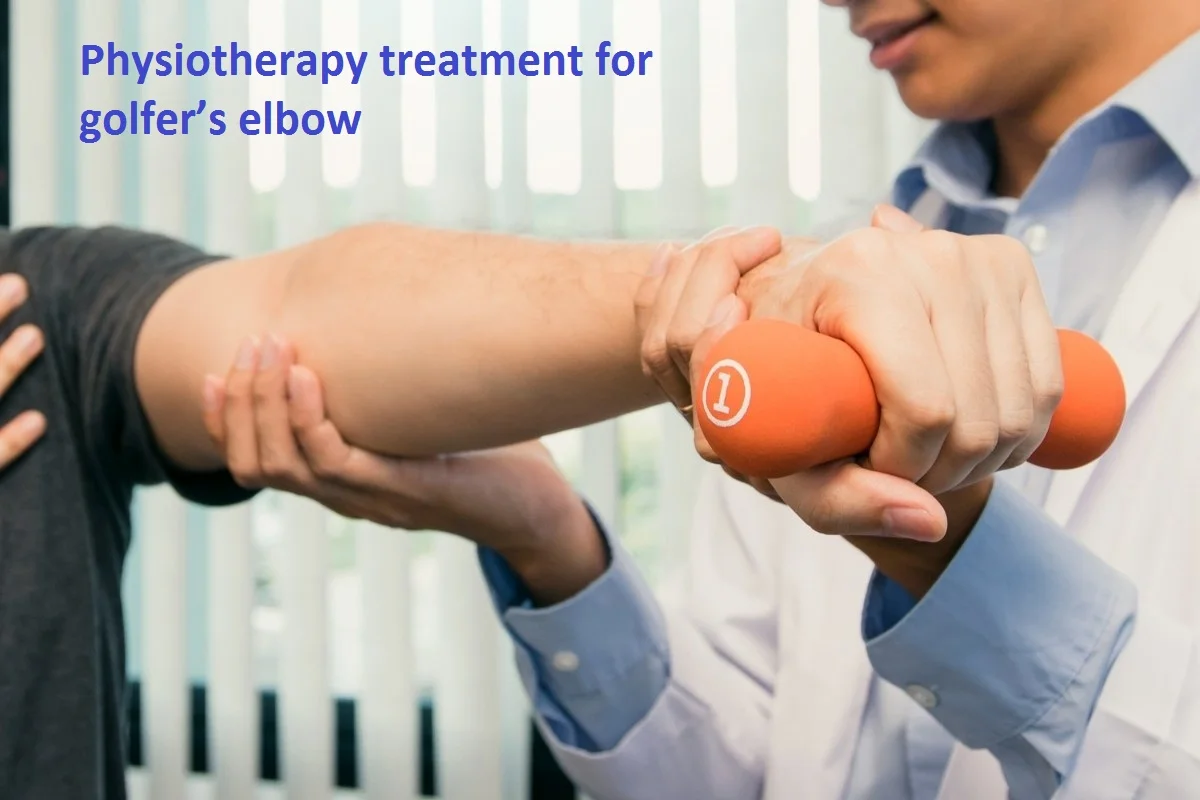
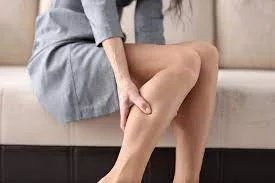
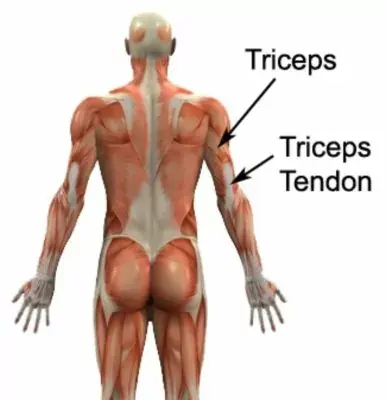
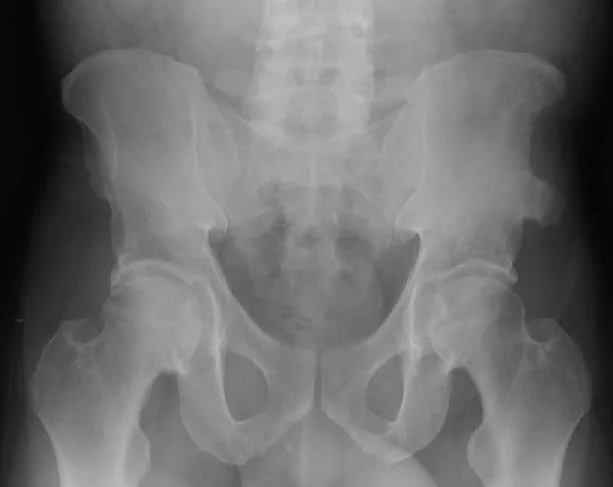
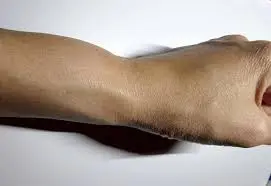
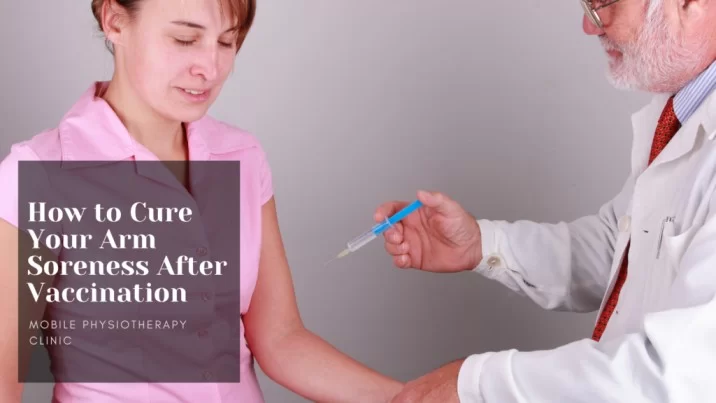
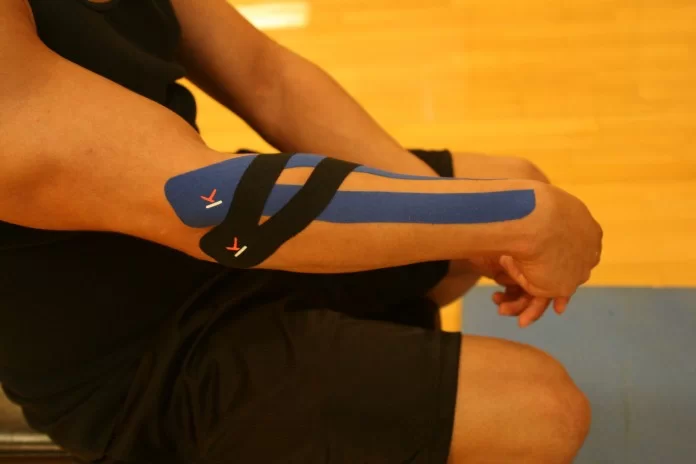
One Comment